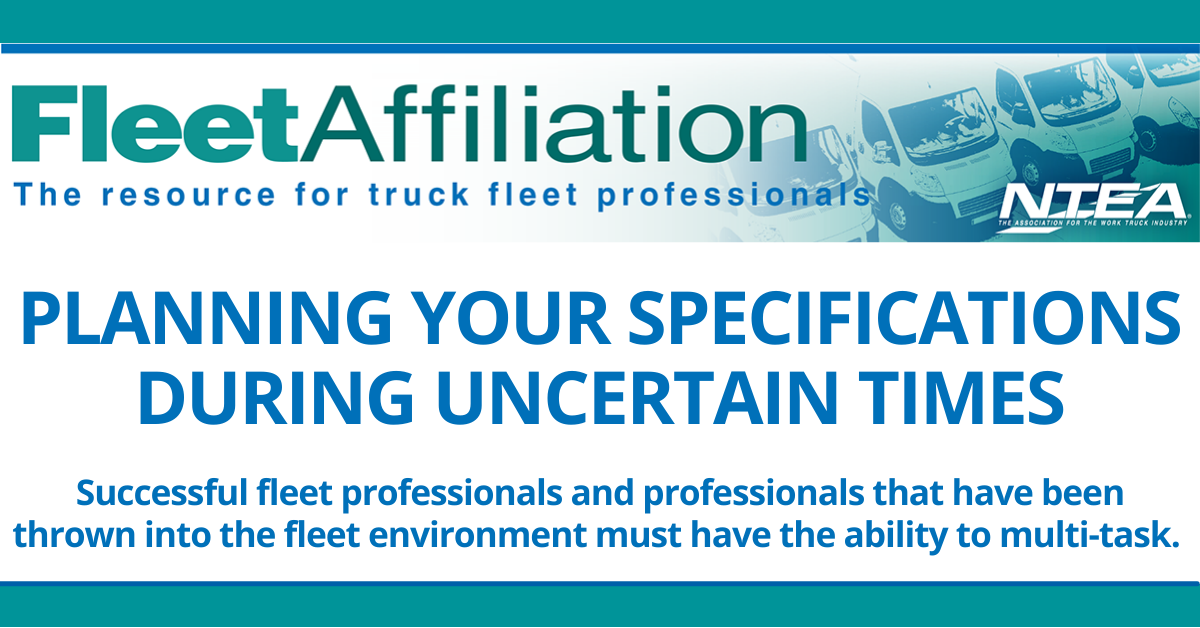 Published in March 2022 Fleet Affiliation.
Published in March 2022 Fleet Affiliation.
With most businesses, planning is key. Almost all organizations have a mission statement, a vision, and most importantly, a business plan. Those of us on the purchasing side already know that trucks are not eternal and do have a finite life. Many of us have gotten good at creating a specification plan and a normal replacement cycle.
The industry is facing chip shortages, labor shortages, chassis availability challenges, and the outflux of organizational tribal knowledge. For the most part, just-in-time plans and specification writing processes are out the window.
Keeping ahead of the curve
Being a successful fleet professional can be one of the most challenging situations within a business. One of the largest challenges is staying educated, and more importantly, educating others as many people have shifted their roles to adjust for current work environments.
Successful fleet professionals and professionals that have been thrown into the fleet environment must have the ability to multi-task. Many people within an organization who are not directly involved with the fleet operation may have very little knowledge on what it takes to maintain these programs, the challenges, and the constraints to keep operations running. This may become problematic if upper management views fleets as an overburdened expense; internal customers might have completely unrealistic expectations on how a fleet operation should run.
Beginning the replacement – having a specification process and a plan
Writing effective commercial vehicle specifications for today’s increasingly complex equipment requires a multifaceted approach that involves input and participation from various stakeholders. With the current times, the spec writer might not have all the direct knowledge nor know the stakeholders to interface with.
A little (or a lot) of coaching and training can put people on the road to success. Informing them about key parties such as the vehicle user, fleet team and the overall supply chain (this includes chassis OEMs, truck dealers, body and truck-mounted equipment companies, vehicle upfitters, and fleet management companies) will be a good foundation for success.
The specification development process encompasses a systematic and defined set of interactions among these stakeholder groups. Taking a systematic approach, and involving the right stakeholders at the right stages of your process, can ensure your vehicles are properly designed and specified for both suitability of task and fiscal responsibility.
Before anyone can do a good job of designing and specifying a vocational vehicle, they first need to accurately define the job or jobs for which the vehicle will be used. After defining the application, they should next identify the functional requirements associated with the application in question. These requirements typically include factors such as the type of body needed; primary special equipment needs (cranes, lift gates, aerial devices, etc.); required payload weight, payload volume, payload; equipment storage requirements; and secondary equipment requirements (generators, auxiliary air compressors, etc.).
These functional requirements are often driven by the environment in which the truck operates. Fleets may operate in multiple environments, and one design may not perform efficiently in all of them. For example, a route delivery fleet that operates in urban, suburban, and rural areas might have critical factors such as vehicle length and maneuverability for the urban environment, and total payload and fuel efficiency for trucks operating in the rural environment.
Wrapping it up
Just-in-time delivery is most likely too unpredictable or unreliable in current times. Communication is key with all stakeholders and management. The more complex the vehicle is will almost always correlate with the lead time for delivery. Several fleets have been waiting over a year to get a build spot. When it comes to balancing and forecasting budgets, this adds another layer of complexity and challenges. This is when it is critical to have communication, understanding, and support at the top of the organization.
